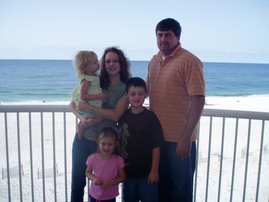
Bats by Lilly Wood (32 pages; 1 book) #32
Wood, Lilly (2000). Bats. New York, NY: Scholastic, Inc.
Awards: No awards given, but blog worthy.
Grade Level: K-4 grades
Author Credibility: I searched for a half hour and could not find any information on her. I could only find three books she has written. I want to believe because she is new because her bats book is well written and beautifully done. She has the outstretched bat on the front cover enticing her reader; she uses small icons of bats numbering the pages. There are Close-up pictures pointing out features of the bat and there is an x-ray included of the bone structure of a bat. She pays attention to detail in her explanations and they go right along with the photographs. She even includes why bats should be saved.
Summary/Response: Bats can turn fast to catch flying bugs. They are not birds because they have fur instead of feathers and they do not have the same wing structure. Some bats can even hop, swim, and climb. Because they have fur and secrete milk for their young, they are called mammals. They have claws that help them hang down when they sleep. They live in many parts of the world in family groups called colonies. Their diet consists of bugs, fruit, and nectar. Only the vampire bat licks tiny amounts of blood in cows and birds. Bats find their way in the dark by making sounds that give off echoes. Some bats migrate for the winter while others hibernate. A bat has one baby a year called a pup. They are good to farmers because the eat the bugs and can carry pollen from one plant to another.
National Standards: Language: Students read a wide range of print and nonprint texts to build an understanding of texts, of themselves, and of the cultures of the United States and the world; to acquire new information; to respond to the needs and demands of society and the workplace; and for personal fulfillment. Among these texts are fiction and nonfiction, classic and contemporary works.
Science: Structure and function in living systems, Reproduction and heredity, Regulation and behavior, Populations and ecosystems, Diversity and adaptations of organisms
Illustrations: Color photographs, x-rays
Access Features: Glossary, A Note to Parents, Suggested Activity
Related Texts: Zipping, Zapping, Zooming Bats by Anne Earle, Bats: Creatures of the Night by Joyce Milton, Stokes Beginner’s Guide to Bats by Kim Williams, Rob Mies, Donald Stokes, and Lillian Stokes
Classroom Use: This is good for a biological science classroom. Books like these are used to expand my student’s mind and to let them know that all of the animals they are afraid of aren’t really “bad.”
Wood, Lilly (2000). Bats. New York, NY: Scholastic, Inc.
Awards: No awards given, but blog worthy.
Grade Level: K-4 grades
Author Credibility: I searched for a half hour and could not find any information on her. I could only find three books she has written. I want to believe because she is new because her bats book is well written and beautifully done. She has the outstretched bat on the front cover enticing her reader; she uses small icons of bats numbering the pages. There are Close-up pictures pointing out features of the bat and there is an x-ray included of the bone structure of a bat. She pays attention to detail in her explanations and they go right along with the photographs. She even includes why bats should be saved.
Summary/Response: Bats can turn fast to catch flying bugs. They are not birds because they have fur instead of feathers and they do not have the same wing structure. Some bats can even hop, swim, and climb. Because they have fur and secrete milk for their young, they are called mammals. They have claws that help them hang down when they sleep. They live in many parts of the world in family groups called colonies. Their diet consists of bugs, fruit, and nectar. Only the vampire bat licks tiny amounts of blood in cows and birds. Bats find their way in the dark by making sounds that give off echoes. Some bats migrate for the winter while others hibernate. A bat has one baby a year called a pup. They are good to farmers because the eat the bugs and can carry pollen from one plant to another.
National Standards: Language: Students read a wide range of print and nonprint texts to build an understanding of texts, of themselves, and of the cultures of the United States and the world; to acquire new information; to respond to the needs and demands of society and the workplace; and for personal fulfillment. Among these texts are fiction and nonfiction, classic and contemporary works.
Science: Structure and function in living systems, Reproduction and heredity, Regulation and behavior, Populations and ecosystems, Diversity and adaptations of organisms
Illustrations: Color photographs, x-rays
Access Features: Glossary, A Note to Parents, Suggested Activity
Related Texts: Zipping, Zapping, Zooming Bats by Anne Earle, Bats: Creatures of the Night by Joyce Milton, Stokes Beginner’s Guide to Bats by Kim Williams, Rob Mies, Donald Stokes, and Lillian Stokes
Classroom Use: This is good for a biological science classroom. Books like these are used to expand my student’s mind and to let them know that all of the animals they are afraid of aren’t really “bad.”

No comments:
Post a Comment